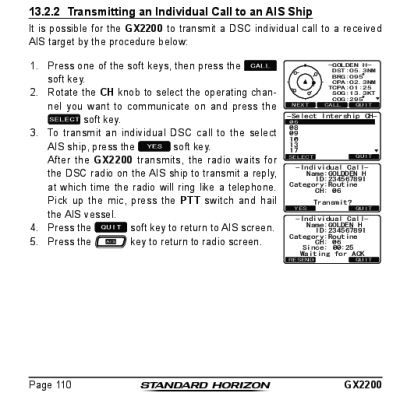QB
Senior Member
- Joined
- Dec 25, 2011
- Messages
- 228
- Location
- USA and Canada
- Vessel Name
- Skookum Maru
- Vessel Make
- Ed Monk design #1924
VHF with built in AIS are great as receivers (remember most do not send your AIS position), just make sure you can connect the radio to your chartplotter so the AIS targets appear there. That's where you want them...
DSC calling is another great tool to have and if used properly can be a real asset. It is true that newer units can call another boat that is displaying their MMSI # by a single tap on your chartplotter screen.
Standard Horizon and ICOM marine VHF transceivers with AIS receive capability can display AIS targets on their own screen and you can select from among those AIS targets to send DSC calls. You don't need to be connected to a chart plotter for that, though the displays on these little radios are crap compared to any decent chart plotter.

